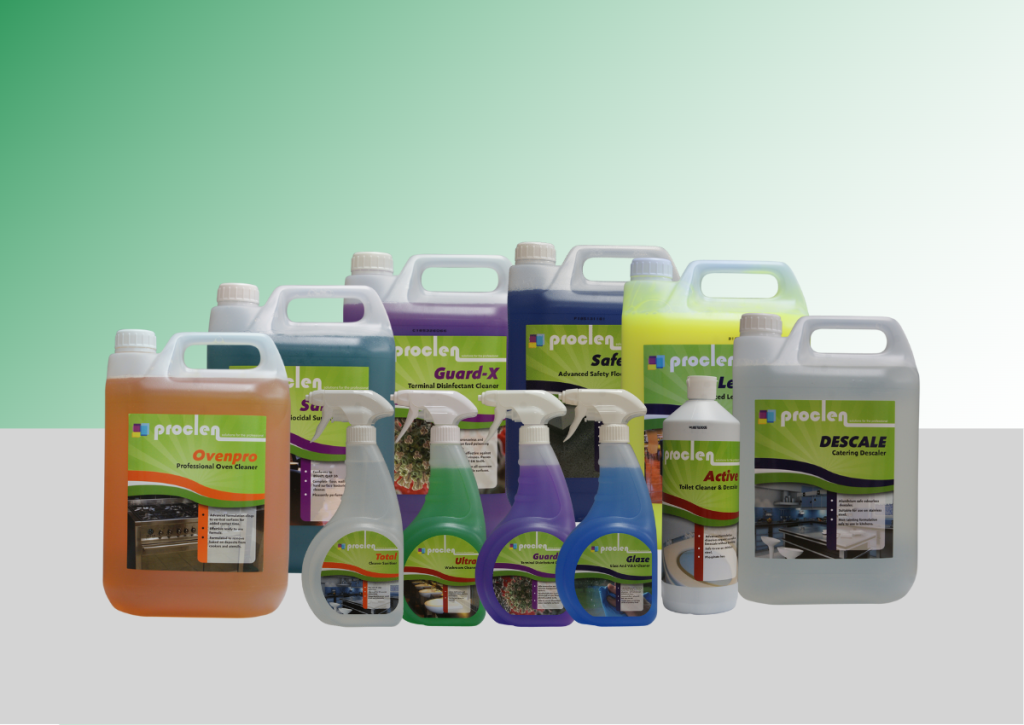Concentrate Chemicals vs Read to Use
When it comes to using chemicals, two common options are concentrated chemicals and ready-to-use (RTU) solutions. Understanding the differences between these two forms and the associated Control of Substances Hazardous to Health (COSHH) risks is essential for safe and efficient chemical handling. In this blog post, we’ll explore the distinctions between concentrate chemicals and RTU solutions, and discuss strategies for mitigating COSHH risks when dealing with concentrates.
What Are Concentrated Chemicals?
Concentrate chemicals are typically highly potent substances that need to be diluted with a solvent (usually water) before use. These concentrated forms are cost-effective because they reduce transportation and packaging costs, and they also allow for greater flexibility in customizing the solution’s strength for specific applications.
Advantages of Concentrated Chemicals:
- Cost-Effective: Concentrate chemicals are more economical in terms of packaging and transportation compared to RTU solutions.
- Customisation: Users can adjust the concentration to meet their specific needs, making them versatile for various applications.
- Reduced Environmental Impact: Fewer containers are required for concentrated chemicals, leading to less waste and a smaller carbon footprint. Also as the concentrate hasn’t been mixed with water, the weight of the product is less and this reduces the emissions for transportation
COSHH Risks Associated with Concentrates:
Handling concentrate chemicals can pose several COSHH risks:
- Chemical Exposure: Concentrated forms can be highly corrosive, toxic, or irritant. Accidental spills or splashes can lead to skin or eye contact, inhalation, or ingestion.
- Ineffective: Incorrectly diluted solutions can be ineffective or dangerous. Under-diluted chemicals may not work as intended, while over-dilution can waste resources.
Mitigating COSHH Risks with Concentrate Chemicals:
- Proper PPE: Always wear appropriate personal protective equipment (PPE), such as gloves, safety goggles, and a lab coat, when handling concentrate chemicals.
- Training: Get your supplier to provide comprehensive training to employees on the safe handling, dilution, and storage of concentrate chemicals.
- Dilution Guidelines: Follow manufacturer-recommended guidelines for dilution ratios to ensure the correct strength for your intended application.
- Labelling: Clearly label containers with the chemical name, dilution instructions, and any relevant hazard symbols.
- Ventilation: Use chemicals in well-ventilated areas to minimize inhalation risks.
Ready-to-Use (RTU) Solutions
What Are RTU Solutions?
RTU solutions are pre-diluted chemical products that are ready for immediate use. They are convenient because they eliminate the need for on-site dilution, making them ideal for tasks where consistency and ease of use are essential.
Advantages of RTU Solutions:
- Convenience: RTU solutions save time and effort as they can be used right out of the container.
- Consistency: Since they are pre-mixed, RTU solutions offer consistent and predictable performance.
- Reduced Handling: There is less need for measuring, mixing, and diluting, reducing the chances of chemical exposure.
COSHH Risks Associated with RTU Solutions:
While RTU solutions are generally less risky than concentrates, some COSHH considerations remain:
- Exposure during Application: Even though the chemicals are pre-diluted, there can still be risks associated with exposure during application if proper precautions are not taken.
- Storage and Handling: Storing and handling containers of RTU solutions still require care and attention to safety guidelines.
Mitigating COSHH Risks with RTU Solutions:
- PPE: Depending on the specific chemical and application, PPE may still be necessary, so consult the safety data sheet (SDS) and follow guidelines accordingly.
- Safe Storage: Store RTU solutions in a secure and well-ventilated area, away from incompatible substances, and in their original containers.
- Proper Disposal: Follow recommended disposal procedures for empty RTU containers and any unused product.
- Training: Ensure employees are trained in the safe handling and application of RTU solutions.
In conclusion, understanding the differences between concentrate chemicals and RTU solutions is crucial for making informed decisions about chemical use in your workplace or home. Concentrates offer cost savings and flexibility but require careful handling and dilution. RTU solutions provide convenience and consistency but still require proper storage and application procedures to mitigate COSHH risks. By following safety guidelines and providing adequate training, you can ensure the safe and effective use of both concentrate chemicals and RTU solutions in your environment, protecting both people and the planet.

